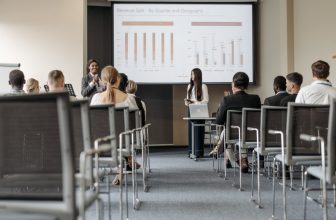
I wanted to create an environment for natural learning in my first-grade classroom (Bertrand & Stice, 2002; Cambourne, 1991; Cambourne & Turbill, 2001). Specifically, I worked to create a print-rich environment in which to immerse my students. I demonstrated reading and writing in ways that would lead to development of skills and strategies my students needed for independent reading and writing, and I created opportunities for them to approximate, take responsibility, and begin to use skills and strategies we studied. Through use of the digital whiteboard I modeled the ways in which readers and writers interact with text. I not only shared effective strategies with my students but also created an environment where students would interact with me and with others in their reading and creation of text (Tompkins, 2003). Mini-lessons, guided reading, and writing tasks were possible through use of the board in my primary classroom.
The digital whiteboard allowed me to prepare lessons that included morning messages, cloze activities, vocabulary exercises, daily oral language sentences, phonetic activities, graphic organizers, and text narratives. With the board as a tool for literacy instruction, I was able to interact with the class, demonstrating and modeling, and manipulating what was on the board by touch. I was not confined to, or focused on, a computer that separated me from the class. Proximity was important for me in creating an environment of being and working together as a community of learners.
Using the Internet along with the digital whiteboard, I made use of video and audio clips to develop background knowledge and provide information on authors, characters, and settings, as well as appropriate background information on places and artifacts not found in our rural community. Students used their fingers on the board in lieu of a computer mouse to navigate to links. The video and audio clips provided sensory data, prompting engagement in the language and literacy lessons. While students were engaged with text and the board, I was able to monitor students’ understanding and adjust instruction as needed.
At the conclusion of work with the board-before and after reading of books and students’ written work-changes were saved to any print or graphic constructed, and copies of the group-constructed lesson text were printed so each student received a copy of the lesson for follow-up work in small groups with peers or the teacher. Such follow-up work could be reworked and reread, encouraging further engagement in the lesson. The “saved” work remained on the digital whiteboard for review and further follow-up if needed. Statements such as “Remember that day we worked on…” prompted the class to revisit, review, and reread text. Continual efforts were made to help students make connections between work done on and with the digital whiteboard and literacy activities done without the whiteboard.

